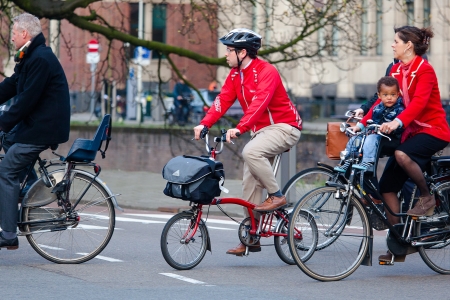Bicycle helmet campaigns generally lead to an increase of helmet use, but sometimes the effect is only temporary. A review study mentions results of 19 studies about campaigns stimulating helmet use [50]. Most were carried out in the United States and Canada and mainly concerned children. The studies showed different results, yet the researchers conclude that
- promotional campaigns generally increase helmet use;
- the largest effect is reached among young children and particularly among girls;
- helmet discounts have a positive effect on purchase and usage.
The latest large-scale campaign in the Netherlands (in the province of Zeeland) also showed an effect, but only in the first year of the campaign [18]. During this helmet campaign, 32 thousand helmets were distributed free of charge among children aged four to eight between 2010 and 2015, accompanied by educational activities. The purpose of this campaign was to stimulate young children to wear helmets voluntarily and thus to reduce head injuries. During the first year of the campaign almost five times as many children (aged four to eight) wore helmets: an average increase of 3.3% to 15.7%. In the control area, helmet use remained unchanged (at virtually 0%). In subsequent years, helmet use again decreased, but remained slightly higher than it was at the start. The scale of the impact was strongly associated with the intensity of activities in the annual campaign.
